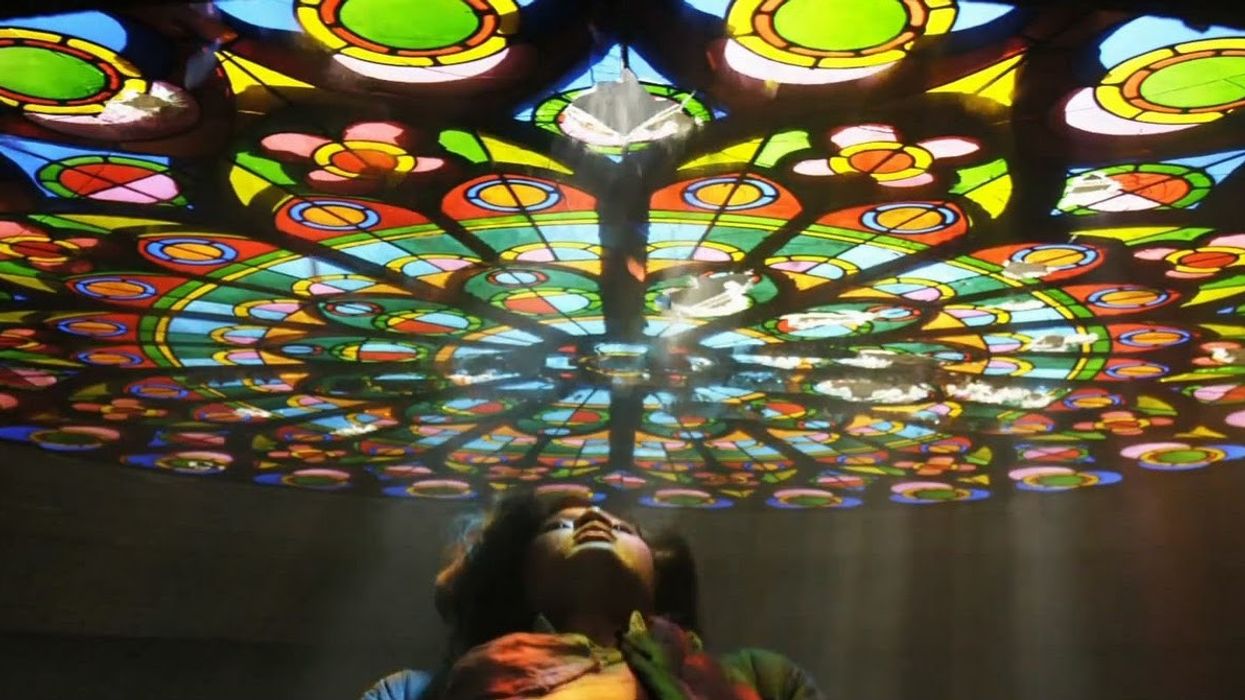7 Important Lessons About Poetic Framing from the Masterful Zhang Yimou
Zhang Yimou has a lot in common with Kurosawa, particularly his use of immaculate composition to enhance the story.

Among the many questions raised by Zhang Yimou's Hero (most notably: how do they jump and fly at the same time?) would be a more general inquiry into what it is that gives this film its peculiar power.
Western audiences were introduced en masse, in a form designed for speedy popularization, to the peculiar magical realism possible in martial arts films by Ang Lee's Crouching Tiger, Hidden Dragon. While enacting something of the same reach to broad audiences, Hero seems to take the process a step farther, and in fact seems a mite more sincere in its pursuit of raw action, without excessive emotional baggage. (Who needs that, anyway?)
Yimou, like Kurosawa, takes advantage of every opportunity to frame characters by themselves.
But there's something else in the film that gives it weight and helps it to please both the martial arts fan and the ascetic aesthete: framing. In this clever video essay, A Void in Frame gets to the heart of things by simply taking away the color. Once this is done, the influence of Akira Kurosawa, master of composition, becomes readily evident and particular points of influence and departure can be isolated quite easily.
1. Centering
Nine times out of 10 in Hero, thanks to Christopher Doyle's cinematography, characters are centered in the frame, as in Kurosawa's films. The immediate effect, of course, is focusing the viewer on the character at hand and the events that befall him or her, thus building suspense. But the overall emotional effect is to convey a sense of predestination, a sense that all of the events that take place in the film were inevitable—that what we're watching is the most recent manifestation of a centuries-old clash, a timeless conflict between the forces of Good and the forces of Evil.
2. Comfort
It wouldn't be a stretch to say that Yimou's films are "easy on the eyes." One reason for that would be their delectable use of the color palette, but another reason, as the essayist points out here, would be that Yimou stages his scenes in such a way that we're never exactly "shocked" by the tableaux we're seeing. Everything is seen from a distance, or cast into soft focus, or otherwise presented in a way that's not jarring or shocking. Kurosawa, similarly, from Throne of Blood to Dreams, is not obsessed with shocking or surprising the audience. Instead, dramatic epiphanies are rolled out like rugs, and we meditate on them from our seats.

3. Isolation
Yimou, like Kurosawa, takes advantage of every opportunity to frame characters by themselves. On the most basic level, this forces viewers to take a closer look at characters' facial expressions. On a slightly more subtle level, however, this also builds suspense. Rather than witnessing a conflict as a clash between two individuals, the viewer is indirectly forced to take the side of each character in the conflict, however momentarily. This intensifies our experience of the conflict.
4. Reinforcement
In Hero, Yimou uses the camera to support and illustrate characters' emotional states. If, for instance, a character is walking down a hallway and the camera keeps tilting from side to side, what can we assume about the character's inner condition? It's troubled, unstable, highly emotional. Techniques like this make films more immediate for viewers.
Movement is essential as a force that drives the story—and a force that drives life itself.
5. Movement
As if to illustrate poet Wallace Stevens' famous lines "Among twenty snowy mountains/the only moving thing/was the eye of the blackbird," Yimou shows that he has an interest in pure movement and the way it can function. There is always something moving in a Yimou frame. It could be water. It could a be a candle flame, or a group of them. It could be leaves, either shaking in a tree or blowing over an empty spot of earth. But the movement is essential as a force that drives the story—and a force that drives life itself.

6. Exaggerated scale
This might have a variety of meanings, depending on the director, but in Yimou's case, it means that close-ups are used for dramatic effect. In the same way that the thumb might seem as big as the moon to an observer standing on Earth, Yimou's views of objects sometimes amplify their presence on screen, so that a hand or a sword might seem gigantic when, in fact, it is normal-sized.
7. Landscape and slow motion
Just as important in the films of Yimou as the characters enacting a story are the elements of the setting in which the story takes place. The essayist notes that Yimou, like Kurosawa, uses immense, ornate backdrops and also entrancing slow motion sequences as purveyors of the potential timelessness of a scene. Set against such a backdrop, or cast in dramatic slow-motion, even the smallest action becomes a harbinger of deep meaning.
















